- Clone
- Ki-67 (See other available formats)
- Regulatory Status
- RUO
- Other Names
- Antigen Ki-67
- Isotype
- Mouse IgG1, κ
- Ave. Rating
- Submit a Review
- Product Citations
- publications

-

Human PBMCs were incubated for 3 days in media alone (left) or with PHA (right). Cells were then fixed, permeabilized, and stained with 168Er-anti-Ki-67 (Ki-67). Data provided by DVS Sciences.
| Cat # | Size | Price | Quantity Check Availability | Save | ||
|---|---|---|---|---|---|---|
| 350523 | 100 µg | 171 CHF | ||||
Antigen Ki-67 is a nuclear protein expressed as two isoforms with molecular weights of 395 and 345 kD. Both isoforms contain one forkhead-associated domain and 16 concatenated "Ki-67 repeats," each containing the epitope recognized by the mAb Ki-67. The antigen Ki-67 interacts with Hklp2, hNIFK, and chromobox protein homolog 1, 3, and 5. Ki-67 is required for cell proliferation and its expression is restricted to the phases G1, S, G2, and M of the cell cycle. This characteristic makes Ki-67 an excellent marker for proliferating cells and is commonly used as one of the prognostic factors in cancer studies. Ki-67 has also been used to study myocyte proliferation after myocardial infarction as well as lymphocyte proliferation during infection, and has been used in neurons of patients with different neuropathologies.
Product DetailsProduct Details
- Verified Reactivity
- Human
- Reported Reactivity
- Cow
- Antibody Type
- Monoclonal
- Host Species
- Mouse
- Immunogen
- Nuclei of the Hodgkin lymphoma cell line L428
- Formulation
- Phosphate-buffered solution, pH 7.2, containing 0.09% sodium azide and EDTA.
- Preparation
- The antibody was purified by affinity chromatography.
- Concentration
- 1.0 mg/ml
- Storage & Handling
- The antibody solution should be stored undiluted between 2°C and 8°C.
- Application
-
ICFC - Quality tested
CyTOF® - Verified - Recommended Usage
-
This product is suitable for use with the Maxpar® Metal Labeling Kits. For metal labeling using Maxpar® Ready antibodies, proceed directly to the step to Partially Reduce the Antibody by adding 100 µl of Maxpar® Ready antibody to 100 µl of 4 mM TCEP-R in a 50 kDa filter and continue with the protocol. Always refer to the latest version of Maxpar® User Guide when conjugating Maxpar® Ready antibodies.
- Application Notes
-
Additional reported applications (for the relevant formats) include: immunohistochemical staining of frozen tissue sections1, Western blotting3, and immunofluorescence microscopy4.
Ki-67 Staining Protocol:
1. Prepare 70% ethanol and chill at -20°C.
2. Prepare target cells of interest and wash 2X with PBS by centrifuge at 350xg for 5 minutes.
3. Discard supernatant and loosen the cell pellet by vortexing.
4. Add 3 ml cold 70% ethanol drop by drop to the cell pellet while vortexing.
5. Continue vortexing for 30 seconds and then incubate at -20°C for 1 hour.
6. Wash 3X with BioLegend Cell Staining Buffer and then resuspend the cells at the concentration of 0.5-10 x 106/ml.
7. Mix 100 µl cell suspension with proper fluorochrome-conjugated Ki-67 antibody and incubate at room temperature in the dark for 30 minutes.
8. Wash 2X with BioLegend Cell Staining Buffer and then resuspend in 0.5 ml cell staining buffer for flow cytometric analysis. - Additional Product Notes
-
Maxpar® is a registered trademark of Standard BioTools Inc.
-
Application References
(PubMed link indicates BioLegend citation) -
- Gerdes J, et al. 1983. Int. J. Cancer 31:13. (IHC)
- Gerdes J, et al. 1984. J. Immunol. 133:1710. (ICFC)
- Schluter C, et al. 1993 J. Cell Biol. 123:513. (IHC, WB)
- Bading H, et al. 1989 Exp. Cell. Res. 185:50. (IF)
- Guha P, et al. 2013. PNAS. 110:5052. PubMed
- Product Citations
-
- RRID
-
AB_2562838 (BioLegend Cat. No. 350523)
Antigen Details
- Structure
- Two isoforms with molecular weights of 395 and 345 kD, one forkhead-associated domain, 16 concatenated Ki-67 repeats, located in nucleus
- Distribution
-
Expressed in the phases G1, S, G2, and M of the cell cycle
- Function
- Required for cell proliferation
- Interaction
- Chromobox protein homolog 1, 3 and 5, Hklp2, and hNIFK
- Biology Area
- Cell Biology, Cell Cycle/DNA Replication, DNA Repair/Replication
- Molecular Family
- Nuclear Markers
- Antigen References
-
1. Byeon IJ, et al. 2005. Nat. Struct. Mol. Biol. 12:987.
2. Yerushalmi R, et al. 2010. Lancet. Oncol. 11:174.
3. Beltrami AP, et al. 2001. N. Engl. J. Med. 344:1750.
4. Sachsenberg N, et al. 1998. J. Exp. Med. 187:1295.
5. Nagy Z, et al. 1997. Acta. Neuropathol. 93:294. - Gene ID
- 4288 View all products for this Gene ID
- Specificity (DOES NOT SHOW ON TDS):
- Ki-67
- Specificity Alt (DOES NOT SHOW ON TDS):
- Ki-67
- App Abbreviation (DOES NOT SHOW ON TDS):
- ICFC,CyTOF®
- UniProt
- View information about Ki-67 on UniProt.org
Related Pages & Pathways
Pages
Related FAQs
- Can I obtain CyTOF data related to your Maxpar® Ready antibody clones?
-
We do not test our antibodies by mass cytometry or on a CyTOF machine in-house. The data displayed on our website is provided by Fluidigm®. Please contact Fluidigm® directly for additional data and further details.
- Can I use Maxpar® Ready format clones for flow cytometry staining?
-
We have not tested the Maxpar® Ready antibodies formulated in solution containing EDTA for flow cytometry staining. While it is likely that this will work in majority of the situations, it is best to use the non-EDTA formulated version of the same clone for flow cytometry testing. The presence of EDTA in some situations might negatively affect staining.
- I am having difficulty observing a signal after conjugating a metal tag to your Maxpar® antibody. Please help troubleshoot.
-
We only supply the antibody and not test that in house. Please contact Fluidigm® directly for troubleshooting advice: http://techsupport.fluidigm.com/
- Is there a difference between buffer formulations related to Maxpar® Ready and purified format antibodies?
-
The Maxpar® Ready format antibody clones are formulated in Phosphate-buffered solution, pH 7.2, containing 0.09% sodium azide and EDTA. The regular purified format clones are formulated in solution that does not contain any EDTA. Both formulations are however without any extra carrier proteins.
Other Formats
View All Ki-67 Reagents Request Custom Conjugation| Description | Clone | Applications |
|---|---|---|
| Brilliant Violet 510™ anti-human Ki-67 | Ki-67 | ICFC,ICC |
| Purified anti-human Ki-67 | Ki-67 | ICFC,CyTOF®,ICC,WB,IHC-F |
| PE anti-human Ki-67 | Ki-67 | ICFC |
| Brilliant Violet 421™ anti-human Ki-67 | Ki-67 | ICFC,ICC |
| Alexa Fluor® 488 anti-human Ki-67 | Ki-67 | ICFC,ICC |
| Alexa Fluor® 647 anti-human Ki-67 | Ki-67 | ICFC,ICC |
| Pacific Blue™ anti-human Ki-67 | Ki-67 | ICFC |
| APC anti-human Ki-67 | Ki-67 | ICFC |
| Brilliant Violet 711™ anti-human Ki-67 | Ki-67 | ICFC |
| PerCP/Cyanine5.5 anti-human Ki-67 | Ki-67 | ICFC |
| Brilliant Violet 605™ anti-human Ki-67 | Ki-67 | ICFC |
| PE/Cyanine7 anti-human Ki-67 | Ki-67 | ICFC |
| Purified anti-human Ki-67 (Maxpar® Ready) | Ki-67 | ICFC,CyTOF® |
| Alexa Fluor® 594 anti-human Ki-67 | Ki-67 | ICC |
| Alexa Fluor® 700 anti-human Ki-67 | Ki-67 | ICFC |
| PE/Dazzle™ 594 anti-human Ki-67 | Ki-67 | ICFC |
| Brilliant Violet 750™ anti-human Ki-67 | Ki-67 | ICFC |
| Brilliant Violet 650™ anti-human Ki-67 | Ki-67 | ICFC |
| Brilliant Violet 785™ anti-human Ki-67 | Ki-67 | ICFC |
Customers Also Purchased
Compare Data Across All Formats
This data display is provided for general comparisons between formats.
Your actual data may vary due to variations in samples, target cells, instruments and their settings, staining conditions, and other factors.
If you need assistance with selecting the best format contact our expert technical support team.
-
Brilliant Violet 510™ anti-human Ki-67
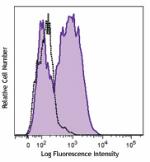
PHA-stimulated (3 days) human peripheral blood lymphocytes w... 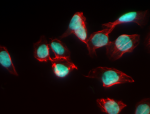
HeLa cells were fixed with 1% paraformaldehyde (PFA) for 10 ... -
Purified anti-human Ki-67
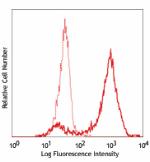
Resting (dashed line) or PHA-activated human peripheral bloo... 
HeLa cells were fixed with 1% paraformaldehyde (PFA) for 10 ... 
Total lysates (15 µg protein) from 293T control (Ctrl) and K... -
PE anti-human Ki-67
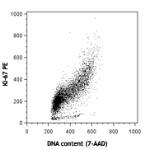
Human T leukemia cell line, Jurkat, fixed and permeabilized ... 
Resting (dashed line) or PHA-activated human peripheral bloo... -
Brilliant Violet 421™ anti-human Ki-67

3-day PHA-stimulated (top) or non-stimulated (bottom) human ... 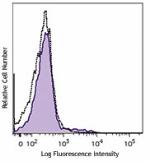

HeLa cells were fixed with 1% paraformaldehyde (PFA) for 10 ... -
Alexa Fluor® 488 anti-human Ki-67
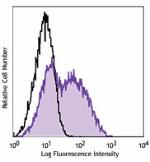
PHA-activated human peripheral blood lymphocytes (3 days) we... 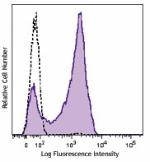
3-day PHA-stimulated human peripheral blood lymphocytes were... 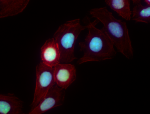
HeLa cells were fixed with 1% paraformaldehyde (PFA) for 10 ... -
Alexa Fluor® 647 anti-human Ki-67

PHA-stimulated (3 days) human peripheral blood lymphocytes w... 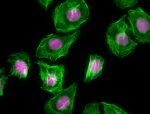
HeLa cells were fixed with 1% paraformaldehyde (PFA) for 10 ... -
Pacific Blue™ anti-human Ki-67
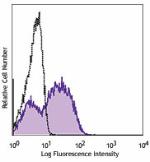
PHA-stimulated (3 days) human peripheral blood lymphocytes w... -
APC anti-human Ki-67
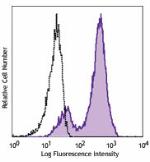
PHA-activated human peripheral blood lymphocytes (3 days) we... 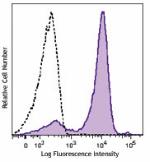
3-day PHA-stimulated human peripheral blood lymphocytes wer... -
Brilliant Violet 711™ anti-human Ki-67
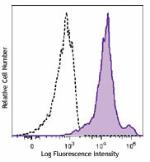
3-day PHA-stimulated (top) or non-stimulated (bottom) human ... 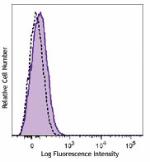
-
PerCP/Cyanine5.5 anti-human Ki-67
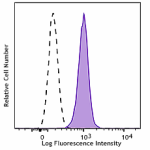
PHA-activated human peripheral blood lymphocytes (1 day) wer... -
Brilliant Violet 605™ anti-human Ki-67
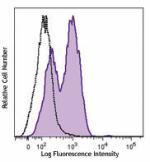
PHA-activated human peripheral blood lymphocytes (3 days) we... -
PE/Cyanine7 anti-human Ki-67

PHA-activated human peripheral blood lymphocytes (3 days) we... -
Purified anti-human Ki-67 (Maxpar® Ready)
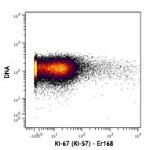
Human PBMCs were incubated for 3 days in media alone (left) ... -
Alexa Fluor® 594 anti-human Ki-67
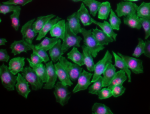
HeLa cells were fixed with 1% paraformaldehyde (PFA) for 10 ... -
Alexa Fluor® 700 anti-human Ki-67
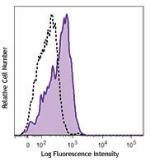
PHA-activated human peripheral blood lymphocytes (3 days) we... -
PE/Dazzle™ 594 anti-human Ki-67

PHA-stimulated human peripheral blood lymphocytes (three day... -
Brilliant Violet 750™ anti-human Ki-67
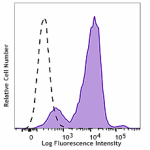
PHA-activated (3 days) human peripheral blood lymphocytes we... -
Brilliant Violet 650™ anti-human Ki-67

PHA-activated human peripheral blood lymphocytes (3 days) we... -
Brilliant Violet 785™ anti-human Ki-67

PHA-activated human peripheral blood mononuclear cells (3 da...

 Login / Register
Login / Register 











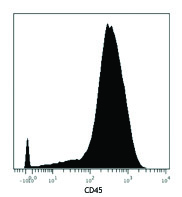




Follow Us